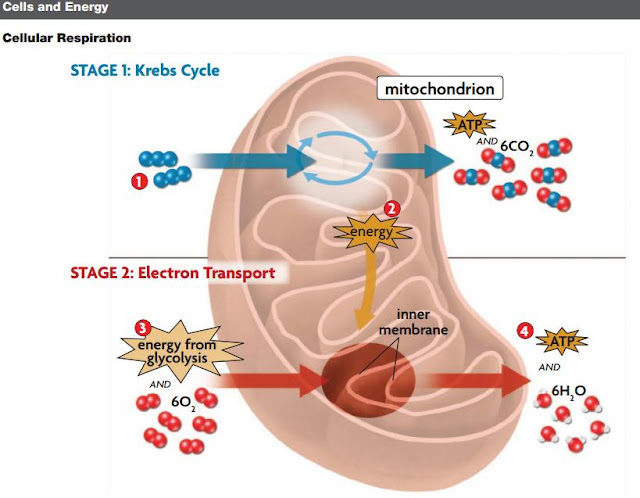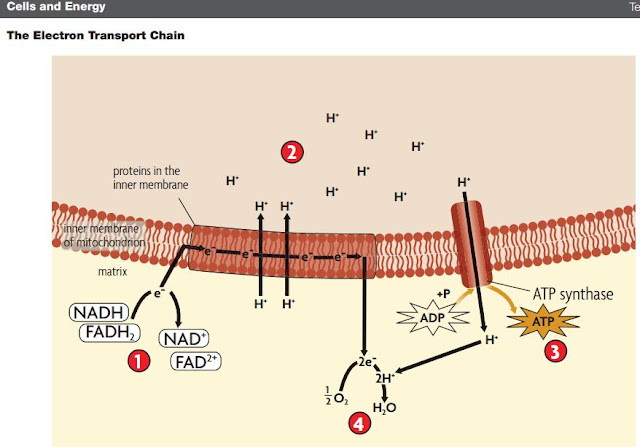Making Connections:
If chloroplasts are like tiny factories that make products,
mitochondria are like power plants that burn fuel to produce electricity.
In a power plant, a processed fuel is burned in the presence of oxygen, and energy is released as useful electricity.
During cellular respiration, oxygen and digested molecules from food are used to produce useful energy in the form of ATP.
4.4 Overview of Cellular Respiration
If chloroplasts are like tiny factories that make products,
mitochondria are like power plants that burn fuel to produce electricity.
In a power plant, a processed fuel is burned in the presence of oxygen, and energy is released as useful electricity.
During cellular respiration, oxygen and digested molecules from food are used to produce useful energy in the form of ATP.
4.4 Overview of Cellular Respiration
Cellular respiration—process through which sugars and other carbon-based molecules are
broken down to produce ATP when oxygen is available
2. Pyruvate: three-carbon molecules
3. Krebs cycle; mitochondrial matrix; produces 2 ATP
4. carbon dioxide
5. energy transferred to 2nd aerobic stage
6. energy from glycolysis and oxygen enter the process
7. Electron Transport chain: produces water and
large number of ATP (34)
large number of ATP (34)
Cellular respiration equation:

C6H12O6 + 6O2 ⇒⇒⇒⇒⇒⇒6CO2 + 6H2O
Kreb Cycle:produces molecules that carry energy to the second part of cellular respiration
Recap Questions:
2. Is oxygen necessary for the production of all ATP in your cells? Why or why not?
4.6 Fermentation
Making Connections:
Think about a time when you worked or exercised hard. Maybe you moved heavy
boxes or furniture.
Maybe, playing basketball, you found yourself repeatedly running
up and down the court.
Your arms and legs began to feel heavy, and they seemed to
lose strength.
Your muscles became sore, and even when you rested you kept
breathing hard. Your muscles were using fermentation
Fermentation—process that allows glycolysis to continue to produce ATP when oxygen is not available, but does not produce ATP
Lactic acid fermentation—pyruvate and NADH enter fermentation; NADH used to convert pyruvate into lactic acid; NAD+ recycled to glycolysis
Alcoholic fermentation
—pyruvate and NADH enter fermentation; NADH used to convert pyruvate into an alcohol and carbon dioxide; NAD+ recycled to glycolysis
Uses of Fermentation:
Recap Questions:
1. How are
lactic acid fermentation and
alcoholic fermentation similar?
How are they different?
2. Describe
the similarities and differences
between cellular respiration and
fermentation.
Quiz Chapter 4.4&4.6
Quiz Chapter 4.4&4.6















No comments:
Post a Comment